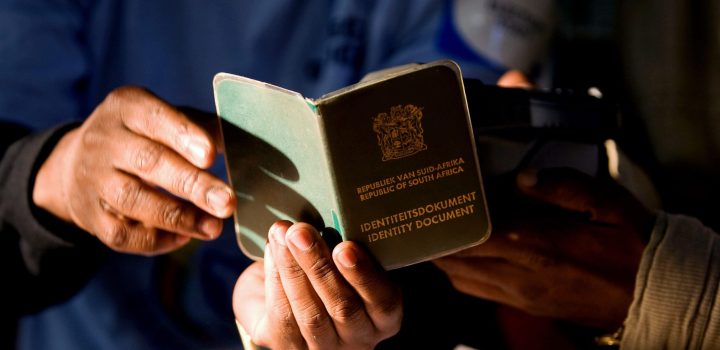SEX STATUS ACT
SA’s transgender population in hurtful battle to change gender markers at Home Affairs

Facing challenges when applying for a gender marker change at Home Affairs is not uncommon. Inadequate training by Home Affairs officials around Act 49 of 2003, the Alteration of Sex Description and Sex Status Act, can lead to inappropriate questions, unreasonable demands and outright denials during the application process.
Approaching a Home Affairs branch is an unwelcome prospect for many South Africans. Long waits, bureaucracy and paperwork are hardly something to look forward to. But for those approaching Home Affairs to change their gender marker, there is an added layer of stress: the fear that they are going to need to justify their existence throughout each step of the process.
This was the experience of Alice Robus, a Cape Town resident who has approached Home Affairs twice in the past 18 months, in an attempt to change her gender marker. During her first attempt, Robus claimed to have been faced by a “revolving door of excuses and hindrances” that prevented her from completing her application.
Robus first approached the Wynberg Home Affairs office in April 2021, after about a year of hormone therapy. She had all the documents required for a legal change of her gender marker and forename.
Aside from a Smart ID or ID book and a birth certificate (preferably unabridged), transgender individuals applying for a gender marker change need to present two letters from two separate medical professionals confirming that they have undergone surgical or medical treatment resulting in gender reassignment. This requirement is laid out in Act 49 of 2003, in the Alteration of Sex Description and Sex Status Act.

Alice Robus, a Cape Town resident, has attempted to apply to change her gender marker and forename twice in the past 18 months. Both times, she has encountered obstacles to completing the process. (Photo: Supplied / Alice Robus)
Alice Robus
“Early one morning, after psyching myself up, I get up and head to the Wynberg Home Affairs. With me, I have two sets of letters,” said Robus, adding that one letter was from her doctor, the other from her psychologist.
At first, the process of preparing her applications went smoothly. She filled out the relevant paperwork and took it to the births and deaths section of the branch, where such applications are processed. The person on duty was polite and quick to assist in processing her fingerprints and forms.
However, problems began to arise at the point when the man assisting her went off to dial the Home Affairs head office in Pretoria to file her application.
Actual changes to the population register need to be done by the National Home Affairs office, at their head office in Pretoria, according to Be True 2 Me, a non-profit organisation that supports the South African transgender and gender-diverse community. Local Home Affairs offices simply process the paperwork to send to Pretoria.
“[The Home Affairs official] comes back to me with: ‘Pretoria says you need a surgeon’s report confirming the [gender-reassignment] surgery’,” said Robus.
However, Act 49 of 2003 does not require a transgender person to show they have had surgery in order to change their gender marker. The “medical treatment” described in the act encompasses hormone therapy. Robus therefore refused to accept this requirement.
“Now… he shows me my two letters, and says the two letters are from the same doctor’s practice, which isn’t going to work. But I say no, they’re from two separate medical professionals. They just work in the same building,” said Robus.
The Home Affairs official then claimed that the two letters were “too similar”, as they followed the same template in confirming that Robus had undergone medical treatment resulting in gender reassignment. The official described this as “suspicious”.
When Robus continued to argue with the official, she was referred to a supervisor. At this point she was told that, while the previous reasons for denying her applications were “nonsense”, she would not be able to complete the process without a psychiatrist’s letter.
“This is brand new. I had never heard of the requirement for a psychiatrist letter in advance,” said Robus.
Robus ultimately left the Home Affairs branch without completing the application process, having been told by the supervisor that even if her application went through, the head office would most likely deny it. The time she spent waiting for results would therefore be wasted.
“What’s sinister to me about it is almost this knowledge of the anxiety we have about the timeframes, sort of like holding this threat of ‘your application is not going to go through’ over my head to get me to shoo and come back with a psychiatrist’s letter,” said Robus.
In April 2022, Robus once again approached a Home Affairs branch – this time in Cape Town CBD – to change her gender marker and forename. In support of her application, she presented two letters from the same doctor and psychologist who had confirmed her medical treatment before.
While this time, her application to change her gender marker was allowed through, she was told she could not apply to change her forename at the same time, as this is not permitted by Home Affairs. This means that Robus will need to wait months – perhaps even years – for her updated identity information, only to apply for yet another change.
The broader issue
It’s not uncommon for people to encounter difficulties when attempting to change their gender marker at a Home Affairs branch, according to Anastacia Tomson-Myburgh, a doctor, activist and educator in the field of LGBTQI rights.
“From what my patients have told me, clerks at DHA [Department of Home Affairs] offices are often ill-informed about the law regarding gender marker changes, may ask inappropriate and invasive questions, or refuse to process applications entirely,” she said.
“Often, applications will be denied because an applicant has not had any gender-affirming surgical procedures (not a requirement, under Act 49). In other cases, applications may be rejected because of a problem with the supporting medical certificates, even if those documents fulfil the legal requirements for the change. For example, I have heard of DHA refusing to accept an application because they considered a psychiatrist not to be a medical doctor.”
Such problems are largely rooted in the training received by Home Affairs officials, said Lee-Anne Walker, executive director of Be True 2 Me. The process for changing people’s gender markers is also not as common as other Home Affairs procedures, meaning that officials may not be familiar.
Training of Home Affairs staff in treating transgender people with respect, and in correctly applying Act 49, is essential, while waiting for changes to the laws surrounding ID documents that would make them more inclusive to transgender populations, said Tomson-Myburgh.
Walker emphasised that a person can change their gender marker and forename at the same time. “I think for me, the important thing to get to the community is that they can do it – it’s in the [Home Affairs] standard operating procedure. And just to… ask Home Affairs officials to go and read it,” she said.
“Because Home Affairs takes so long… it’s actually better… to do it at one time. Else you’re just sitting six months for the one, and six months for the other.”
The process of changing an applicant’s gender marker should take six to eight months, said Walker. However, since 2020, the process can take up to two years, with the wait in some cases even exceeding this timeframe. The average wait is about one year.
Ongoing struggle
The experience of being prevented from applying to change one’s gender marker can be very traumatic and painful, according to Tomson-Myburgh. Those turned away may also face obstacles in reapplying, such as transport costs and medical appointments.
“This is particularly upsetting if the initial application was compliant with Act 49, and should not have been rejected,” said Tomson-Myburgh.
The consequences of having a gender marker on one’s official documents that doesn’t match one’s gender identity are “multiple, and can be very profound”, she continued.
“Many people will struggle to find employment or access healthcare without updated documents. Any situation that requires a person to present an identity document can lead to uncomfortable and inappropriate questioning, or even physical violence, if that document is not congruent with a person’s identity.”
Travelling to certain regions can become difficult, or even dangerous, with documents that don’t accurately reflect one’s gender identity, according to Walker. Banking, too, becomes a challenge.
“There’s a story of a person who went into a bank, a trans guy, presenting male, but had a female ID,” shared Walker. “Before they knew it, the teller said ‘I’ll be with you in a second’. Then a few minutes later, they’re lying on the floor in handcuffs.”
A person should not stop living or progressing because they have a gender marker on their official documents that doesn’t match their gender identity, but it is a pain to go back to various institutions and change documents with the wrong marker later in life, said Walker. For some, the prospect brings their lives to a standstill.
“It’s this everyday anxiety of creating a paper trail that’s wrong. I remember getting my driver’s licence, knowing that this is another thing I’m going to have to fix,” said Robus.
“I still… have my folder of all my certificates from high school and I look at it, knowing that, you know, it’s always going to be in the wrong name.”
Robus is applying for university. Part of the reason she is eager to have her gender marker and forename changed as soon as possible is so that, in three or four years when she gets a degree, the correct information will be on her certificate.
“I don’t want my degree to be like my high school achievements,” she said. “I want it to be in the right name.”
Maverick Citizen reached out to the Department of Home Affairs about the standard operating procedures around gender marker and forename changes, the training of officials and handling of complaints. No response was received at the time of publishing. DM/MC




















 Become an Insider
Become an Insider
Comments - Please login in order to comment.